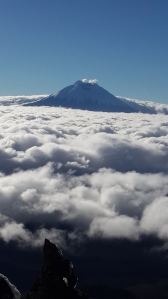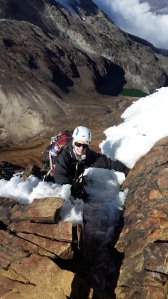
I started running in 2014. We had just summited Mt. Elbrus, but I felt I was too slow on the descent and needed to increase my cardio training. True, some of it could have been due to the third degree sunburn I had managed to achieve. But, regardless, we knew there were a number of higher mountains in our future – the Ecuadorian volcanoes were on the burner for 2015 – so the cardio was essential.

I started slowly; fast I am not. And over the next several years I worked my way from a 5k to a bit over 7 miles. There were times I felt I could have gone further, but I just didn’t. My standard was a 5k on the treadmill Wednesday nights before yoga and a 5 to 6 mile run on Saturday mornings.
But all things change. This past summer we actually achieved our goal of summiting an over 20,000 foot mountain – Stok Kangri in Ladakh, India. My Wednesday yoga class time was moved up to 7 pm, making it practically impossible to get a 5k in between yoga and work. And more importantly, I felt I was getting slower and slower.
For Type As like me that means that Friday nights started to be filled with an existential dread (ok, not quite that bad) of how my run would be the next day. Could I achieve under 12 minute miles consistently? Why didn’t I ever get an under 11 minute like I used to? What’s wrong with me? Can 4 years of aging make a difference? What does this say about my next climbing or trekking expedition? You get the picture.
Then, a few weeks ago, I just stopped. I simply made the conscious decision, somehow justified in my head, that what I really needed to improve was my general walking speed. So I would just become a fast walker.
I started with a very brisk three mile walk to meet a friend for (of all things) a stroll through a “fairy door” exhibition in a nearby park, and realized I could keep my “splits” at 15 minutes per mile or less. After a few sessions of that, I decided to “walk” to the Y before a Saturday yoga class. And as I took off down the road, on what felt like a crisp day, at least to us Floridians, I suddenly realized I wanted to run. So I did. And it felt good to let my legs move freely without obsessing about what my Fitbit was showing. I’d run to the end of the block or the next tree or whatever the mark was and then keep going at a walking clip for a while – and then run again, whenever I felt like it. And ironically, I discovered that when I run I’m running faster than I did and overall end up with 13 to 14 1/2 minute miles and a decently elevated heart rate.
I’ve been using this run- walk technique for a few weeks now. And I’m looking forward to my Saturday morning training sessions again. Friday nights aren’t filled with worry. As I wend my way through the neighborhood, I’m noticing more things – a new home renovation project, which trees are blooming, the latest development in the never-ending series of drainage construction projects by the lake where we live.
It was like letting the air out of a balloon. But not in a disappointing way. Letting up on all that pressure let me enjoy it all again. I’m going to try to remember that as we enter the upcoming Thanksgiving to Christmas marathon.



















